Key Takeaways
- Carpenter bees can weaken wooden structures, leading to costly damage.
- Look for round holes, sawdust, and hovering bees as infestation signs.
- DIY methods include insecticidal dust, boric acid, and essential oils.
- Seal entry holes and use hardwoods to prevent reinfestation.
- Professional pest control is best for severe or inaccessible infestations.
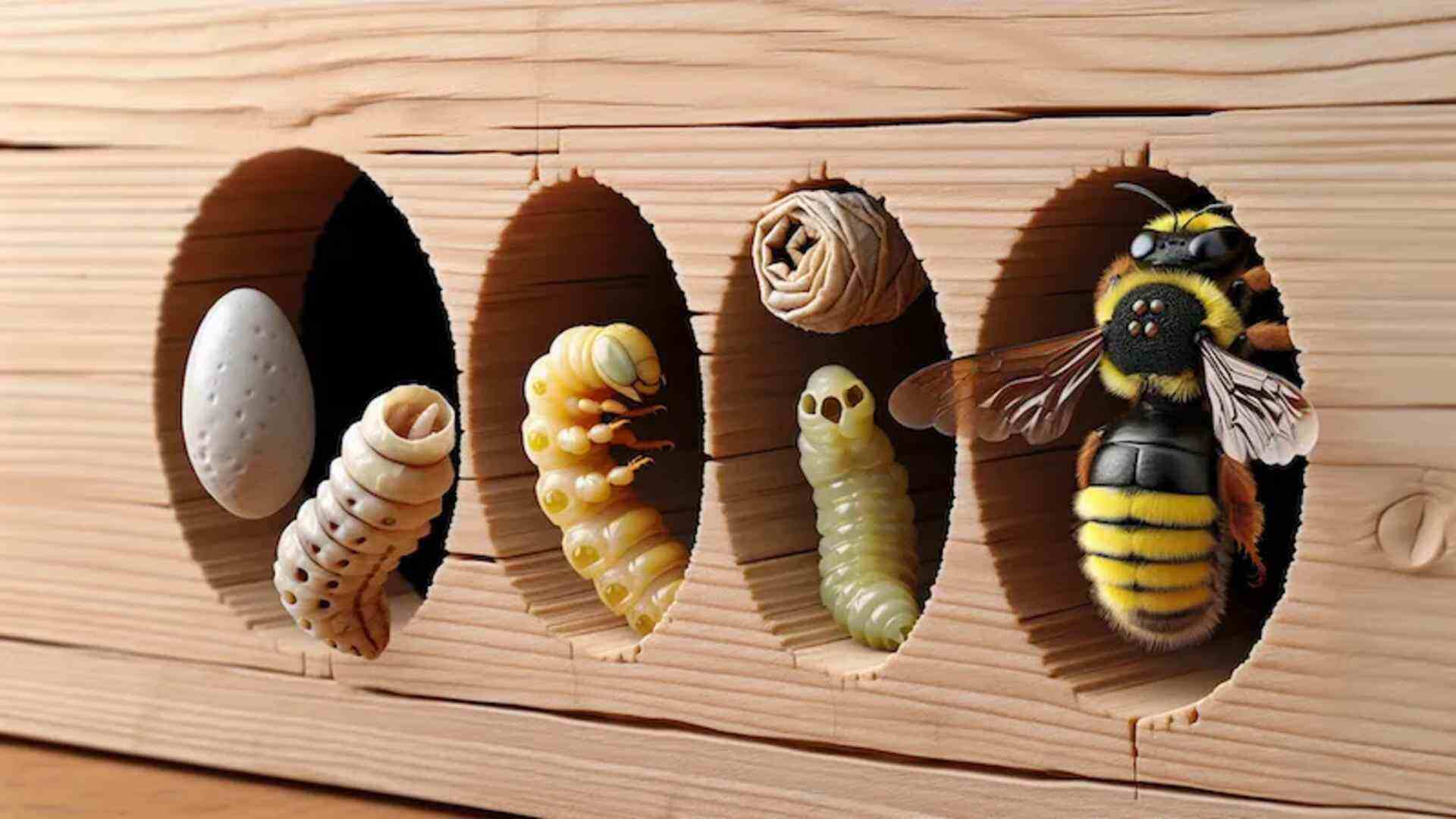 Finding carpenter bees nesting in your home’s wood structures can be alarming for homeowners across the United States. While these buzzing bees are beneficial pollinators, their nesting habits can results in weakening structural integrity, damaging wood and inviting further issues like mold, decay, and woodpeckers. Situations like these needs extra precaution in identifying and dealing with carpenter bees.
Finding carpenter bees nesting in your home’s wood structures can be alarming for homeowners across the United States. While these buzzing bees are beneficial pollinators, their nesting habits can results in weakening structural integrity, damaging wood and inviting further issues like mold, decay, and woodpeckers. Situations like these needs extra precaution in identifying and dealing with carpenter bees.
This guide explains precisely what to do if you discover carpenter bees nesting in your wooden structures, emphasizing effective, safe, and environmentally responsible methods for further future infestations.
Identifying Carpenter Bee Activity
-
Perfectly Round Holes: Carpenter bees create nearly perfect ½-inch diameter holes in wooden surfaces such as decks, eaves, fences, and outdoor furniture.
-
Sawdust Accumulation (Frass): Piles of sawdust often appear directly below entry holes, indicating active tunneling by carpenter bees.
-
Active Bee Presence: Carpenter bees hover near wooden structures and can be seen entering and exiting their nesting holes, especially during warmer months.
-
Yellowish Stains: Bee waste stains, often yellowish, may be visible around nesting sites, further indicating carpenter bee activity.
-
Woodpecker Activity: Larger holes may appear as woodpeckers search for carpenter bee larvae inside tunnels, causing additional structural damage.
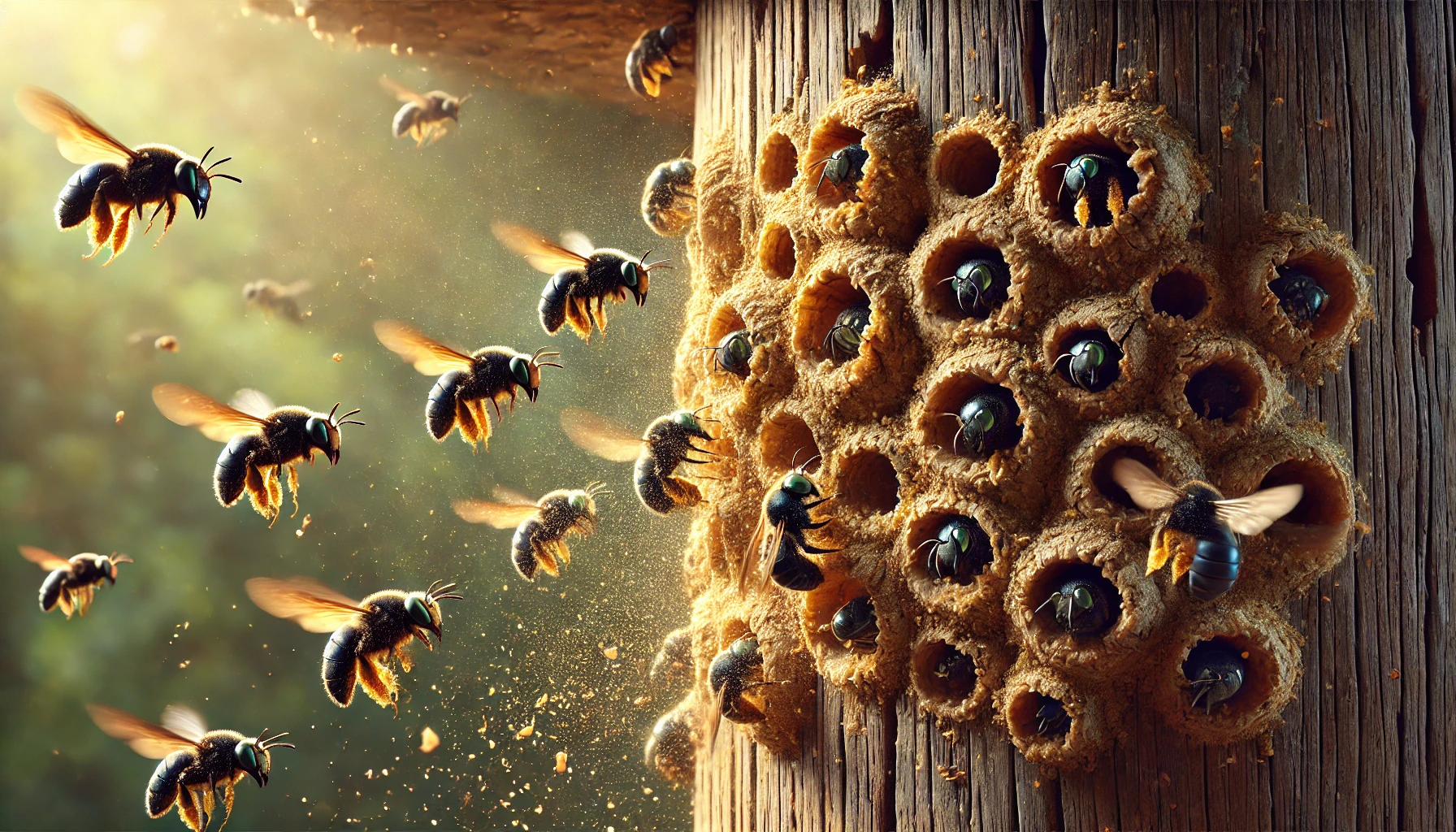

Not getting a solution?
Get your free pest control estimate today!Steps to Take When You Discover Carpenter Bees
Step 1: Safely Inspect the Area Approach suspected nesting areas cautiously, ideally in the evening or early morning when bees are less active. Wear protective clothing, including gloves and eye protection, to minimize the risk of stings. Assess the infestation’s extent—multiple entry points across various structures indicate a serious infestation. Step 2: Choose Your Approach (DIY vs. Professional) Evaluate whether your infestation is manageable through DIY solutions or if professional intervention is necessary:- DIY Approach: Suitable for minor infestations (fewer than five holes).
- Professional Pest Control: Advised for widespread, persistent infestations, inaccessible nests, or when allergic to stings.
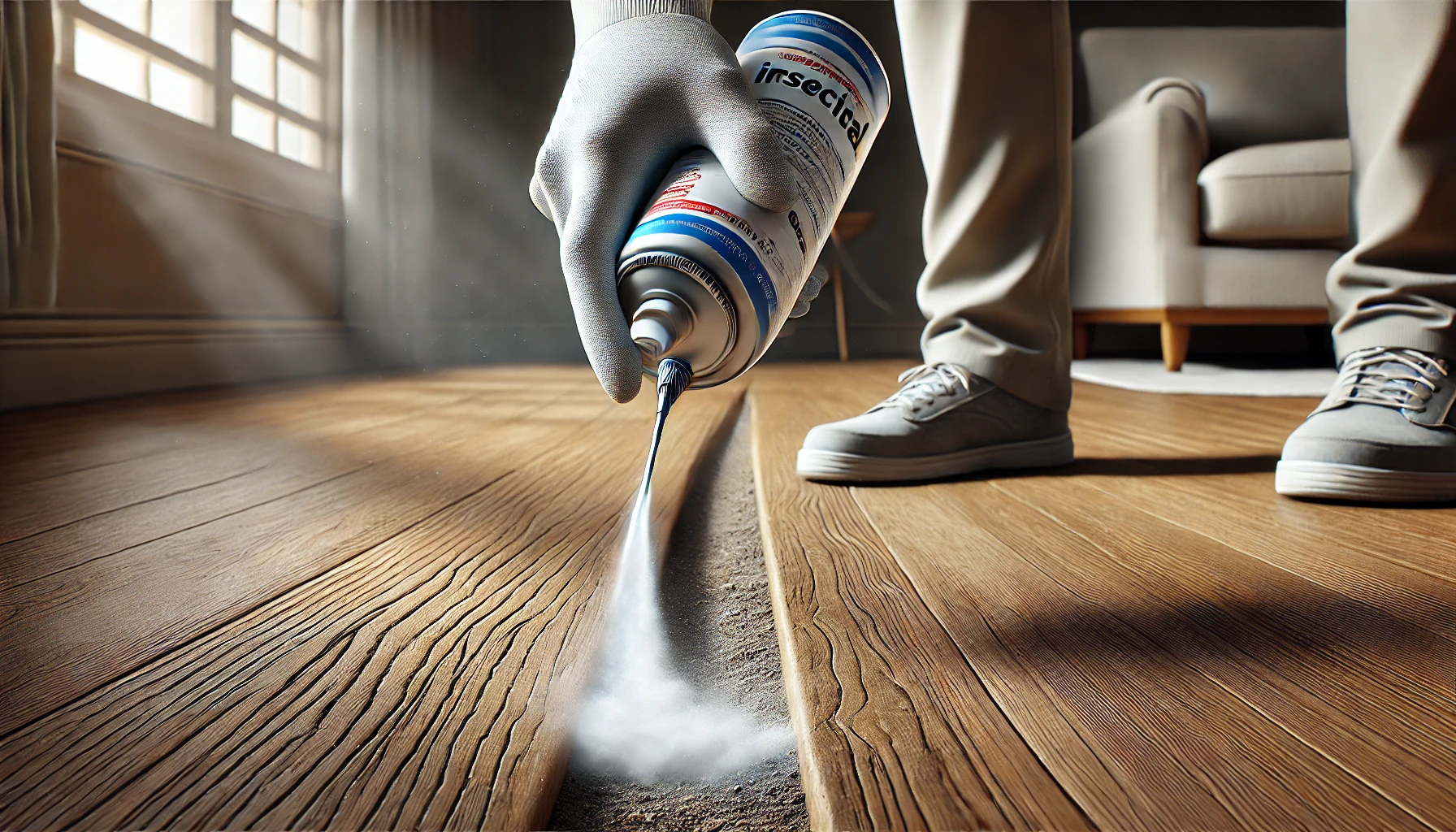
Option A: Insecticidal Dust
-
Apply insecticidal dust specifically labeled for carpenter bees directly into nest entrances.
-
Best done at night to ensure bees are inside.
Natural and Eco-Friendly Options
-
Boric Acid or Diatomaceous Earth: Apply directly into holes using a bulb duster; effective at eliminating carpenter bees while being less toxic.
-
Essential Oil Sprays: Citrus, almond, eucalyptus, peppermint, or tea tree oils can deter bees without killing them, making them a safer alternative.
-
Carpenter Bee Traps: These traps lure bees away from nesting sites and capture them without chemicals. Place them strategically around the property to reduce bee activity.
- Seal all entry holes using wood filler, caulk, or wooden plugs.
- Consider using a combination of wooden dowels and wood putty for a stronger, long-lasting seal.
- Paint or stain over sealed holes to discourage future nesting.
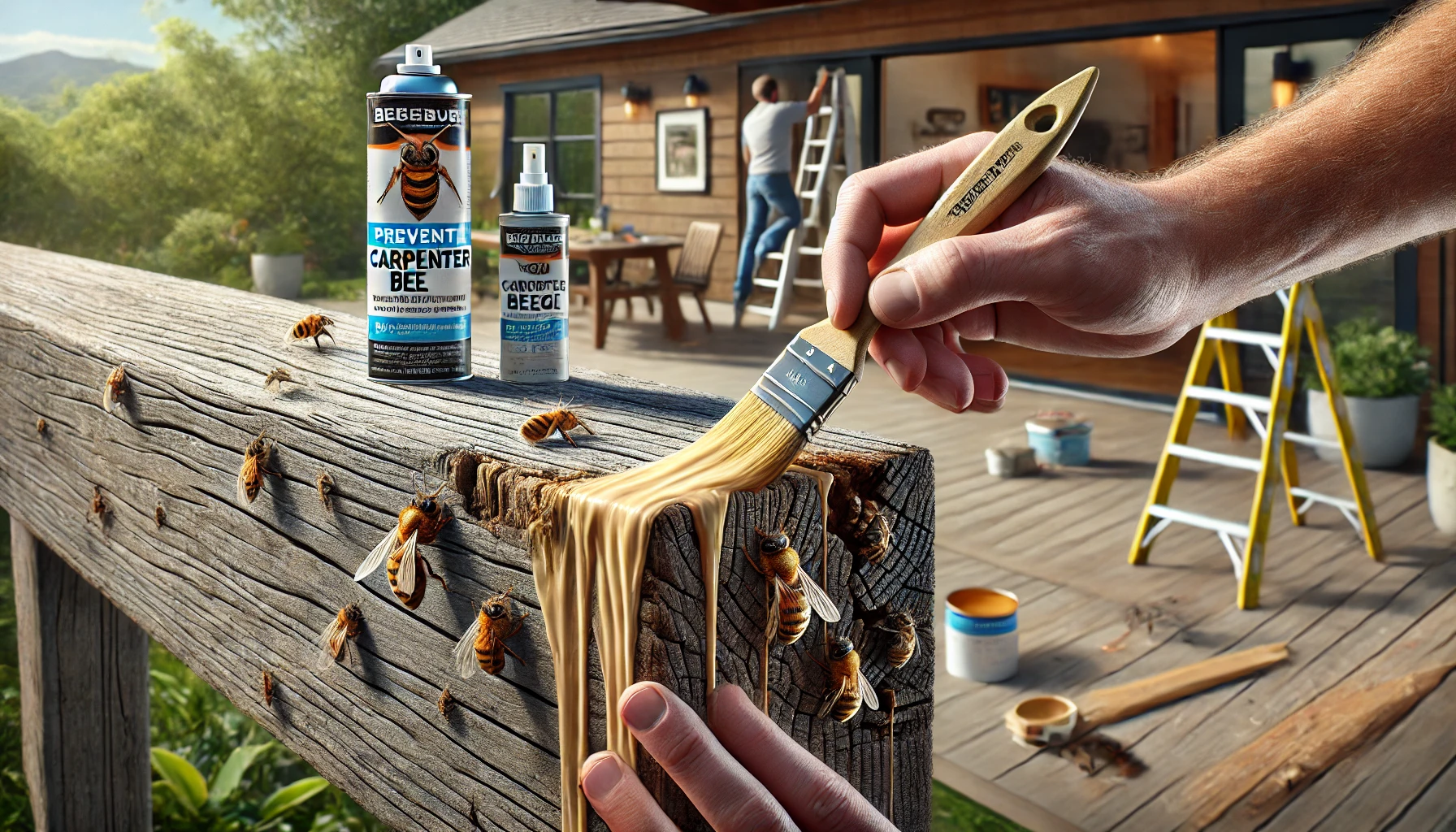 Step 5: Prevent Future Infestations
Carpenter bees tend to return annually, so preventive measures are essential:
Step 5: Prevent Future Infestations
Carpenter bees tend to return annually, so preventive measures are essential:
- Regular Painting and Sealing: Bees prefer untreated, softwoods. Regularly paint or apply protective finishes to outdoor wood structures.
- Use Hardwood or Pressure-Treated Lumber: Hardwoods and pressure-treated lumber are less attractive to carpenter bees.
- Physical Barriers: Install fine wire mesh on vents, soffits, and eaves to prevent bees from accessing ideal nesting sites.
- Maintain Your Yard: Remove old or decaying wooden items or debris that may attract bees.
DIY vs. Professional Pest Control: A Deeper Look
| Criteria | DIY Solutions | Professional Pest Control Solutions |
|---|---|---|
| Cost | Lower upfront, mostly materials cost | Higher upfront, varies based on infestation severity |
| Safety | Safe if following guidelines carefully | Professionals ensure safe handling and application |
| Effectiveness | Effective for minor to moderate infestations | Highly effective, comprehensive eradication guaranteed |
| Convenience | Time-consuming, requires repeated treatments | Quick and thorough with lasting solutions |
| Best Suited For | Small-scale infestations, preventive actions | Severe, widespread infestations or inaccessible areas |
- Natural Oils: Safe and effective in repelling carpenter bees without harmful chemicals.
- Alternative Nesting Sites: Setting up bee houses or untreated wood blocks away from your home can help divert bees to safe areas.
- Physical Barriers: Use wire mesh or screens on vulnerable wood structures to physically block bees.
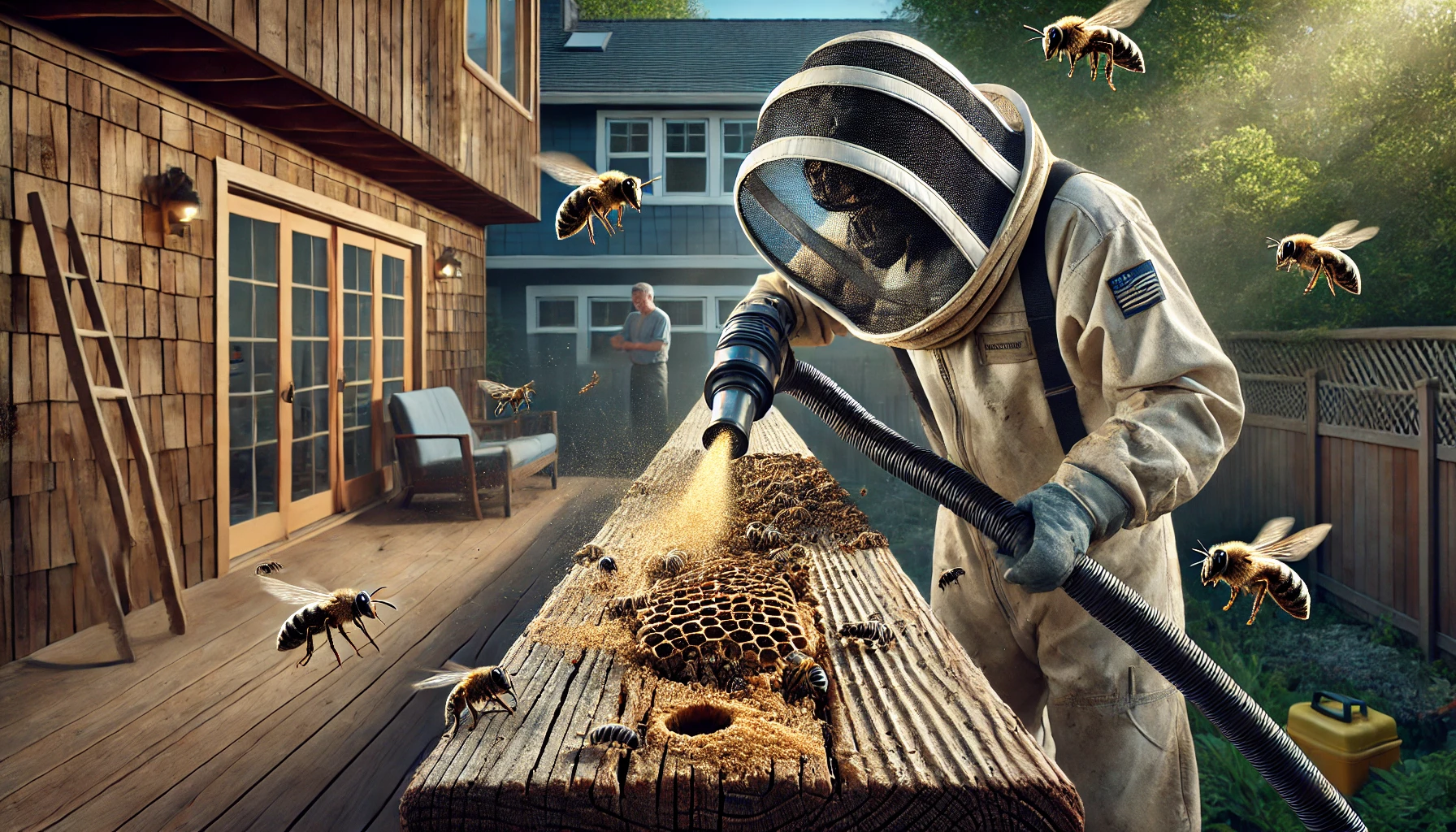
Long-term Maintenance Tips
Consistent property maintenance significantly reduces carpenter bee attraction:- Annual Inspections: Perform thorough inspections every spring and fall.
- Prompt Repairs: Quickly address damage, sealing gaps and repainting or refinishing wood surfaces regularly.
- Use Pest-Resistant Materials: Replace severely damaged wood with composite materials or pressure-treated lumber.
Visit our Species, Control, and DIY Guide sections for additional resources on carpenter bees and ways to tackle a carpenter bees infestation.





